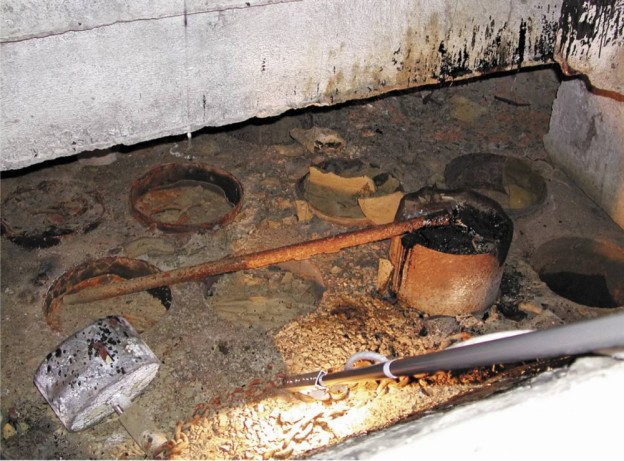Nuclear specialists say Andreyeva Bay contains the largest reserves of spent nuclear fuel in the world, in fragile conditions that have disturbed the international community for years During the Cold War period, nuclear submarines were refuelled at sea, and the spent nuclear fuel was then shipped to Andreyeva Bay, where it was placed in a special storage facility to cool off before being transported to a reprocessing plant at Mayak, in the Urals. But in the early 1980s, leaks sprung up in the storage system, causing high levels of radioactive contamination.
The facility at Andreyeva Bay was one of many top-secret installations in the Soviet Arctic. This is partly because Russia has a working nuclear submarine base on the other side of the bay at Zaozyorsk….[W]estern nations who see Moscow as a military threat are helping to fund the clean-up of the mess the Soviet military left behind. 13 countries have provided €165m in funding since 2003 for nuclear decommissioning in Russia’s north-west. There have also been a number of bilateral projects, with Britain, Norway and other countries funding a long project to help clean up Andreyeva Bay.
The Norwegian foreign minister….said the funding for the projectd was committed nearly two decades ago, when Russia was in no economic state to deal with the problems alone. He also pointed out that the Andreyeva Bay facility is only about 40 miles from the Norwegian border, making the decommissioning issue one in which Norway has long taken a strong interest. “Nuclear challenges recognise no borders, and it is in our common interest to deal with nuclear waste now rather leaving the problems to future generations,” said the Norwegian foreign minister…
A suite of new buildings has been constructed around the area where the spent nuclear fuel caskets are kept, replacing the decaying structures that stood there previously. Work to load canisters into the giant protective casks can now be done using specially commissioned machinery.
The Rossita, a ship constructed for the task, will take the huge fuel casks to Murmansk, where they will be put on fortified trains which will proceed under armed guard on the long journey from the Arctic to the Mayak reprocessing site. At the Mayak facility, the spent fuel will be recycled and the Russians say they will turn it into fuel to be used in civilian nuclear reactors.
Specialists at the plant estimate it could take 10 years to remove all the fuel. About half of the caskets have some kind of surface damage to their containers and will be dealt with after the non-problematic batches have been removed.
Excerpts from Russia begins cleaning up the Soviets’ top-secret nuclear waste dump, Guardian, July 2, 2017
